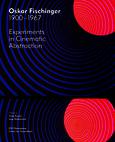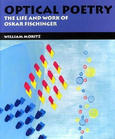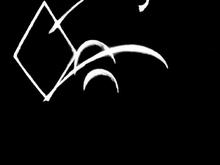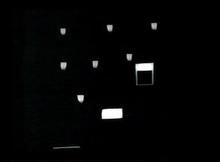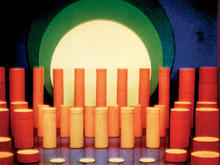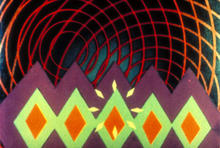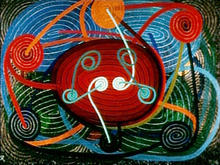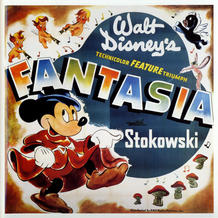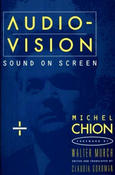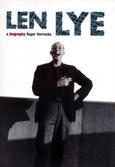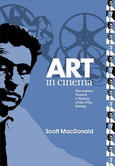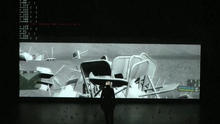Oskar Fischinger
(1900-1967) was a German abstract animator, filmmaker, and painter. He made over 50 short animated films, and painted c. 800 canvases, many of which are in museums, galleries and collections worldwide.
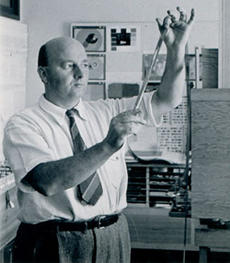
Oskar Fischinger originally chose music as a career, studying violin and organ building (for mathematical harmonic theory) before 1914. Too young and unhealthy for war duty, he was forced to learn architectural drafting and tool design. At the beginning of April 1921, he was thrilled by the first performance of Walther Ruttmann's Light-Play Opus No.1 (a color abstract film with a live musical score) and vowed to devote himself to absolute cinema, which could best combine his skills at music and graphic art.
His first films of the early 1920s are among his most radical, perhaps because he felt challenged to create something quite different from the romantic choreography of small figures in the films of Ruttmann or the static development of graphic intricacies in the work of Viking Eggeling. Fischinger was also influenced by Tibetan Buddhism toward meditative mandala structures. (...)
In each of the Studies he set himself a different visual problem to solve: in Study No. 6 a flexible aerodynamic movement that resolves into icons suggesting the eye as mandala or the splitting of matter in an Einsteinian relativity; in Study No. 7 a deep-space perspective of hard-edged figures contrasted with a flat surface where sensuous art-nouveau shapes metamorphose; in Study No. 8 an orchestral multiplicity and density of figures, etc. (...)
He secretly produced a second color film, Composition in Blue, using small geometrical models. Fischinger exhibited Composition in Blue at foreign festivals without a proper permit, and it won the King's prize at the Brussels World Fair in October 1935, which placed Fischinger in a dangerous position. Fortunately Paramount rushed him to Hollywood in February 1936, but they did not allow him to continue to work in color once he was there. With a grant from the Guggenheim Foundation he was later able to buy back from Paramount his short film Allegretto, which, printed in color, stands as one of the most perfect pieces of visual music: the layers of cels allowed Fischinger to develop rhythms, harmonies and counterpoints of forms, while the colors change from frame to frame to create lush hues on divisionist principles. (...)
Frustrated in his filmmaking, Fischinger turned increasingly to oil painting as a creative outlet. Although the Guggenheim Foundation specifically required a cel animation film, Fischinger made his Bach film as a documentation of the act of painting, taking a single frame each time he made a brush stroke – and the multi-layered style merely parallels the structure of the Bach music without any tight synchronization. Although he never again received funding for a film, the breathtaking Motion Painting No. 1 won the Grand Prix at the Brussels International Experimental Film Competition 1949. Three of Fischinger's films also made the 1984 Olympiad of Animation's list of the world's greatest films.
Source: The Fischinger Trust and Archive
